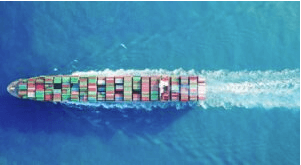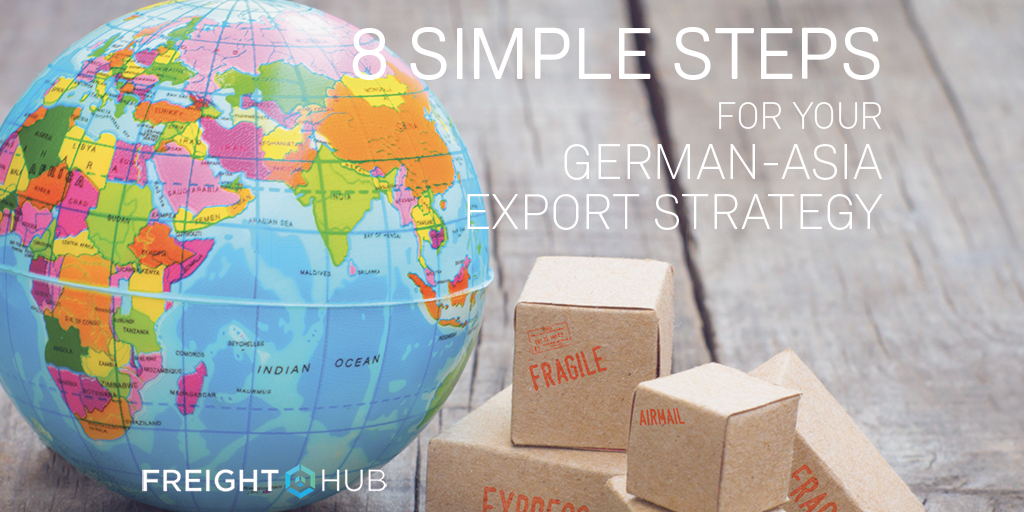Let’s face it. German exporters to Asian markets find themselves in an enviable position. Right now is an excellent time to establish your business in Asian markets.
As indicated by the Federal Statistical Office, Germany exported goods to the value of 103.7 billion euros in July 2017, an increase of 8.0% from a year ago. Exports of goods to countries outside the European Union (including Asia) equaled 43.8 billion euros in July 2017. An increase of 9.7% from the previous year.
“A competitive manufacturing sector and euro depreciation have driven strong export performance,” states the OECD Economic Surveys – Germany (April 2016). The report notes that export performance by German small or medium-sized [SME] firms “has been impressive over the past ten years, keeping the share of industry in domestic value-added at an unusually high level of 22%”
Strategic German advantages in transport, electronic and optical equipment and chemicals are often cited as reasons for the success of German SMEs in exports.
Decentralised management in family-owned German SMEs – the Mittelstand– combined with major worker involvement, has led to hospitable environments for product innovation. Product improvements have assisted exporters in competing on quality abroad. Offshore manufacturing to low-wage regions has brought down costs in the process.
The depreciation of the euro has also helped. Even with the recent rise in the value of the euro, which reached its highest point in more than two years against the dollar this September, German exporters remain calm and optimistic. “We’re totally relaxed about the euro’s current strength,” said Anton Boerner, president of the BGA trade and wholesale association in an interview with Reuters. “Neither the speed nor the extent worries us.” (Quality and service of German products are thought to be the most important –and continued – contributors to export success).
Here are eight simple steps so that you, too, can capitalize on ”export success”:
1. Think of Challenges as Opportunities
At the Deutscher Exportag in Mannheim on September 20, 2017, attendees had one thing on their minds: “Globalization under pressure.”
“Globalization Under Pressure: Meeting current challenges entrepreneurially” was the title of the opening panel discussion at “German Export Day”.
Leadership in many countries are seeking to balance globalization with solving problems domestically. The aim is to ensure stable economic conditions. One answer to a shifting trade landscape -including US protectionist sentiment- is the opening and fostering of new markets – particularly China and Asia.
This is one opportunity that businesses can seize upon and FreightHub’s new export functionality is to help them. The technology provides instantaneous quotes for EU to Asia transport by sea (either Port to Port or Door to Port).
EU-Asia trade is at a high point, and the market is strong. China’s Population is 1,4 bn and its Average annual GDP growth over the past decade is 10.5% (World Economic Outlook Database)
Companies interested in pursuing Asian markets can take the first step by reaching out to Germany Trade & Invest.
2. Find Best Costs
We know keeping an eye on costs remains an ever-important step (considering the capital needed to cover production, operating costs until goods are finished, etc.). Knowing that cost-saving measures are always welcome, FreightHub offers China-bound exporting firms the opportunity to comparison shop your logistics options. Beyond price, it is possible to select different modes of transport for shipments and transit time on one screen. The mode of transportation is an essential factor when planning the shipment process. Besides the costs, the urgency of the shipment, the value of the goods being shipped as well as the size and weight of the goods need to be assessed when deciding upon mode of transport.
3. Keep Track of Shipments
Strategic corporate entry into Asia involves keeping track of your shipments. Having a digital solution, a dashboard helps. “The dashboard allows me to access all relevant information regarding my shipment at any time. I can get quotes, track my shipment and archive all documents in one place,” states Marc Buchna, FOND OF BAGS and user of FreightHub’s digital freight forwarding platform. By adopting this approach, staff at FOND of BAGS can deal with common challenges many German exporters face such as staying on top of an increasingly intricate global supply chain with multiple and concurrent shipments and documents, seeking transparency over costs and delivery status, and meeting the pressure of timely delivery for a global network of consumers.
4. Work with the best
Finding the right people -sourcing partners, local contacts, distributors, technology partners- to maintain the reputation of German products as the best quality – is no small task and you the manufacturer or exporter understands this well. That includes your freight forwarder too! We pride ourselves on our team. We are “a group of successful serial entrepreneurs whose ambition is to combine the best talent and technologies from the digital industry and the logistics sector.” Ultimately, the goal is to deliver your products on time at the desired condition and create the best freight forwarding experience.
5. Modify Your Plan if Needed – Ask for Help
Entering a new market involves many details. Don’t hesitate to make a change if you need to. Check out our FAQ section for answers. Contact us and ask questions. If we can’t help you, we will put you in contact with someone who can. For example, Amazon FBA sellers can find out more information from Bastian Barami at Officeflucht (FBA training). — Export strategy development takes time.
6. Embrace Corporate Social Responsibility
Corporate social responsibility is not just about “following rules” – it is about integrating values (like honesty and respect) into everyday business practice. It’s about making a positive impact on the environment, dealing fairly with consumers, workers, improving communities. German exporters are embracing corporate social responsibility as a way of doing “good business”. Recently, FreightHub has begun measuring its office’s carbon footprint and offsetting CO2 emissions using Myclimate.
7. Harness Digital
Accelerating into the future will require reliance on digital. At Freighthub we are Europe’s first fully digital freight forwarding company. Automation in logistics services is providing many benefits for exporters who rely upon them.
8. Do What You Do And Do it Well
Germany’s top 10 exports are vehicles, machinery, chemical goods, electronic products, electrical equipment, pharmaceuticals, transport equipment, basic metals, food products, and rubber and plastics. Approximately 1,500 Mittelstand companies are “leaders in their niches,” making everything from “tiny screws that penetrate concrete, to automated ovens for grilling 400 chickens at a time, to tunnel-boring machines as long as oil tankers.” For FreightHub, it is customer service in freight forwarding that is our single-minded focus – putting customers in control of their cargo through a customised platform – and being able to support them.
Take The First Step
Contact us now to explore your German-Asia Export Strategy and how we may help you!








